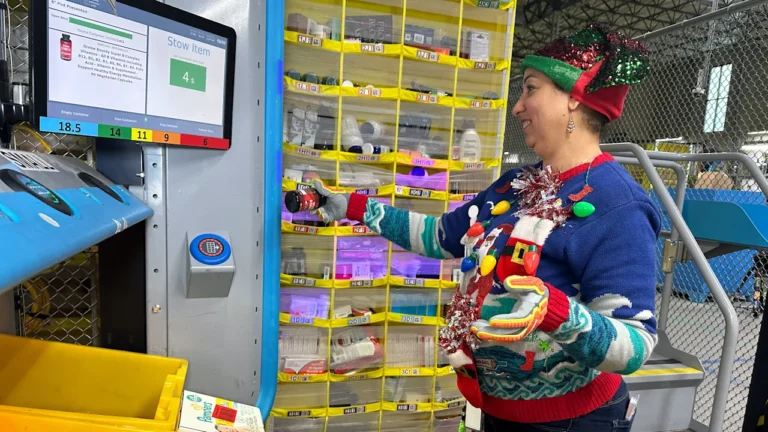
As a learning designer at Zapier, I used to spend my days helping my teammates learn: I built and led trainings, created enablement resources, and helped folks better understand how their work contributed to company strategy. Now, I sit inside our HR team as an AI automation engineer. But the through line is the same: I still help my teammates (and now customers, too!) do their best work.
What is an AI automation engineer?
AI automation engineer sounds like a vague title, so here’s the job, plainly: I embed with a team (HR, in my case), spot opportunities to enhance the team’s work, and build AI-powered workflows that jump on those opportunities. The goal is to create measurable improvements that free my teammates up for creativity, strategy, and connection.
I think we’ll be seeing this title pop up more and more as time goes on. For example, instead of hiring a new content writer, content marketing teams might look for AI automation engineers with a strong eye for content. Instead of a new junior coder, engineering teams might look for an AI automation engineer with a technical background.
Why the AI automation engineer role matters
Lots of teams see AI’s potential but get stuck turning ideas into action. The gap is less about technology and more about translation: understanding how a real process works today, where it fails, what data is safe to use, and what “better” even looks like.
AI automation engineers close that gap. We prototype fast using tools like Zapier, ChatGPT, Airtable, and Cursor, then we harden those prototypes into reliable internal tools.
In HR, that looks like:
- Reducing the back-and-forth between recruiting, interviewers, and candidates
- Auto-summarizing interview debriefs so we can make decisions faster
- Keeping people data in sync across tools, with the right guardrails for privacy and compliance
- Giving folks self-serve answers to policy questions without losing the human touch
And it is not just about helping my own team. A big part of my role is building repeatable HR workflows that we can share with our customers. When I design something for Zapier’s people team, like an interview debrief summarizer or a self-serve policy bot, I’m also thinking about how it could work for other HR teams out in the world. Sometimes it even goes the other way: a customer use case inspires a workflow that we bring back inside Zapier.
What I actually do week to week as an AI automation engineer
AI automation engineer is a new type of role, and I’m even newer to it myself, but here’s a glimpse into how I spend my days.
- Triage workflows: I map how work really happens, quantify the cost of the current process, then rank opportunities. I’m looking for spots where I can have a big impact.
- Prototype quickly: Once I know where I want to help, I build small, testable versions using Zapier and other AI tools.
- Embed with the team: I sit with the people doing the work. We try the prototype in the real flow and adjust prompts and logic. We document what to trust and when to escalate to a human.
- Scale the AI automation: Once the workflow proves itself, I add error handling, retries, observability, and access controls. I create a runbook so the team can own it, not me.
- Teach and enable: I host short workshops, write playbooks, and pair with team leads so they can spot the next opportunity themselves (and know when not to use AI).
- Measure outcomes: I track hours saved, error rate reduction, cycle-time improvements, adoption, and the business outcome (e.g., faster time-to-hire, better candidate experience).
- Partner with sales: When we see an HR workflow that really moves the needle, I package it into a demo or playbook that our sales team can share with prospects. Sometimes I join those conversations directly to explain the workflow in plain language: why it works, what problems it solves, and what business results it drives.
- Share feedback upstream: Because I’m building on top of Zapier and AI tools every day, I run into edge cases, missing features, or things that could be smoother. I funnel that feedback back to our product team, often with concrete examples from both our people team and customers. It means the next version of Zapier is more aligned with how real HR teams actually work.
For some examples of what I’ve built, read about my favorite agents or take a look at our HR AI automation playbook.
What does it take to be an AI automation engineer?
I don’t come from a technical background, but I’m a tinkerer, and I think that’s what makes me suited for this role. I’m comfortable building with no-code tools and love to ship solutions.
Skills I’ve picked up along the way are prompt engineering, responsible AI practices, and understanding how to pick the right AI tools for the job.
One of the most important parts of the role, though, is something I have a lot of experience with: enablement. I need to make sure the folks I’m building for understand how to make the most of these systems.
One important thing to note: My focus is squarely on HR. That’s where I build, prototype, and enable. While I love seeing how AI automation engineers show up in marketing, IT, or engineering, my role is all about HR use cases. I help our people team work smarter, and I help our customers run stronger HR operations. But I’m also proof that you don’t need to be a software engineer to become an AI automation engineer. Here are some other folks from the Zapier community who I’d argue are AI automation engineers, each from a different background.
- Remote’s Marcus Saito (head of IT) used AI to auto-resolve 27.5% of IT tickets. This saved his team more than 2,200 days and $500,000 in hiring costs.
- Vendasta’s Jacob Sirrs (marketing operations specialist) used AI to automate sales workflows, save more than 282 workdays a year, and reclaim $1 million in revenue.
- ActiveCampaign’s Tabitha Jordan (manager of product education) implemented AI-powered lead enrichment to give the sales teams time to focus on high-value activities.
Moving from learning & development into this role as an AI automation engineer for HR hasn’t changed my mission. I still help people work better. If you’re AI-curious, start with the smallest annoying task you do every week. Fix that. Measure it. Then fix the next one.

